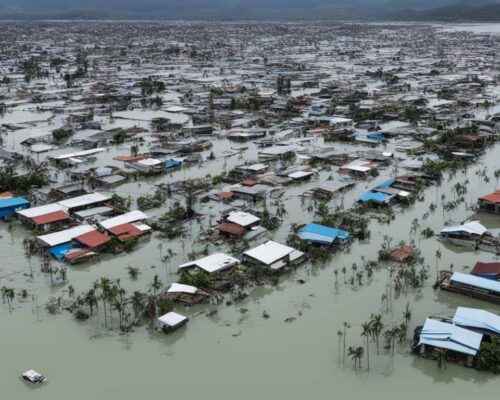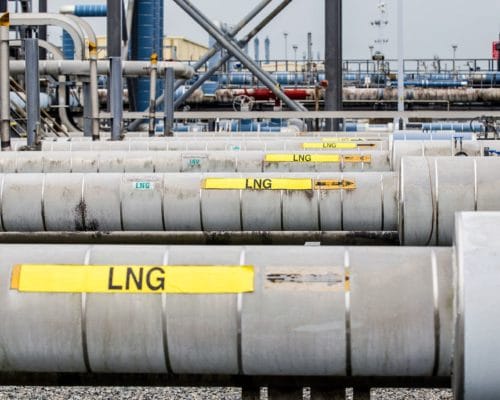G7 Gas Move a Likely Nod to US and Japanese Interests
Photo: Shutterstock/Iljanaresvara Studio
29 May 2023 – by Tim Daiss Comments (0)
The G7 Summit 2023 in Hiroshima ended on May 22 with notable takeaways. The group, which includes host country Japan, the US, the UK, France, Germany, Italy and Canada, showed “unwavering solidarity” with Ukraine amid its protracted war with Russia.
The nations also asked China to pressure Russia to end the more than one-year-long war in Ukraine. Notably, the G7 2023 draft communique also addresses significant issues in the global energy sector against the world’s energy security backdrop and the war in Ukraine.
G7 leaders called on major economies to revisit and strengthen their respective 2030 Nationally Determined Contribution (NDC) targets and long-term low greenhouse gas (GHG) emission development strategies before COP28 convenes in Dubai later this year.
The G7 group endorsed a common net-zero by 2050 goal through “various pathways” depending on each nation’s energy situation, industrial and social structures and geographical conditions.
The group called for the end of the construction of unabated coal power projects. “Unabated” signifies projects that don’t use carbon capture utilisation and storage (CCUS) technology to capture harmful emissions.
G7 Inadequately Addresses Coal
As such, the group of industrialised nations has problematically left further coal power development on the table, relying on a technology that remains unproven on a large scale. The nations also failed to set a specific timeline for unabated coal power phaseout.
This is a likely nod to Japan, whose reluctance to address its coal power usage adequately swayed the G7 group. Moreover, it shows Japan’s isolation among its peers, as a direct result of a failure to adopt more ambitious domestic power sector decarbonisation plans.
The G7 also addressed expanding renewable energy globally and bringing down costs through steps including a collective increase in offshore wind capacity of 150 GW by 2030 and a collective increase of solar PV to more than 1 TW by 2030.
LNG Investment Going Forward
Furthermore, the G7 agreed that each nation could still pursue further gas and liquefied natural gas (LNG) investment. The group offered a caveat, claiming that more gas investment was needed in light of continued Russian pipeline gas disruption to EU members, adding that it would only be temporary.
However, this move is as problematic as its failure to address coal-fired power generation adequately.
The Natural Gas Sector
The G7 was placating Japan again over its LNG over-reliance. Japan is the world’s largest LNG importer and relies on the super-cooled fuel for around one-third of its power generation energy mix. It relies on fossil fuels for around 88% of its total fuel usage.
Moreover, Japanese utilities are some of the largest LNG users, financiers and secondary traders of the fuel. Japan views LNG as a sustainable fuel integral to its clean energy transition. Thus, it remains keen on further gas investment.
Massive Emissions
This comes despite gas emitting at least half of the harmful emissions as coal – the world’s dirtiest burning fossil fuel. Methane from gas is also more than 25 times as potent as carbon dioxide at trapping atmospheric heat.
Japan’s gas proliferation both at home and abroad, particularly in developing Southeast Asia, misses the mark. It makes the same miscalculation as it does with its coal power development. Both strategies rely on CCUS technology to address harmful emissions.
The US Flexes LNG Muscle
The US could be another underlying reason for the group’s continued gas narrative. The country’s LNG development has seen it ascend to the top third in global LNG when it comes to liquefaction capacity and export.
Markedly, LNG will continue to lead growth in overall US gas exports over the next two years, the US Energy Information Administration (EIA) said in March. The US is also a major pipeline gas exporter, mostly to neighbouring Mexico – which is relying on US gas to become a major LNG exporting hub. It aims to sell its gas to the Asia-Pacific region.
The US will regain the top global LNG export slot this year after a fire-idled plant on the US Gulf Coast in Texas was restarted. In 2022, US-based LNG exports spiked 8% to 10.6 billion cubic feet per day (bcfd). That was slightly behind top LNG exporter Australia’s 10.7 bcfd. The US also remained ahead of legacy LNG producer and exporter Qatar, which – in third place – shipped 10.5 bcfd.
USD 100 Billion in Future US LNG Projects
The future for US LNG development is robust. It will see USD 100 billion in new LNG projects in the next five years.
However, these investments counter the International Energy Agency’s (IEA) assessments that have stressed that no new investments should be made in fossil fuel supply and projects if the world hopes to stop global warming from exceeding 1.5°C. That limit would avoid the most severe effects of global climate change.
Japan is also keen on financing US LNG projects with public funds and has inked a number of US LNG supply deals.
Given these facts, the convergence of US LNG interests alongside those of the world’s top LNG importer, Japan, is problematic. It deserves closer scrutiny, especially since it has influenced G7 policy and the world’s ability to reduce harmful energy project emissions.
by Tim Daiss
Tim has been working in energy markets in the Asia-Pacific region for more than ten years. He was trained as an LNG and oil markets analyst and writer then switched to working in sustainable energy, including solar and wind power project financing and due diligence. He’s performed regulatory, geopolitical and market due diligence for energy projects in Vietnam, Thailand and Indonesia. He’s also worked as a consultant/advisor for US, UK and Singapore-based energy consultancies including Wood Mackenzie, Enerdata, S&P Global, KBR, Critical Resource, and others. He is the Chief Marketing Officer (CMO) for US-based lithium-sulfur EV battery start-up Bemp Research Corp.
Read more


